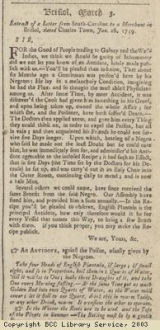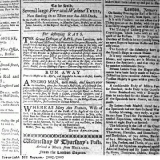Slave resistance at work
Enslaved Africans resisted, or rebelled, against their position as slaves in many different ways. Each expression of resistance by enslaved individuals or groups counted as acts of rebellion against the system of slavery. The many instances of resistance show that slaves were not victims of slavery who accepted their situation. Instead they proved their strength and determination in fighting for their freedom.
Uprising, or rebellion, was the most dramatic and bloody way that slaves could resist their enslavement. Less obvious methods of resistance occurred on the plantations. For example, slaves could steal from their owner, robbing him of his property and profit. They could damage machinery, so that it was put out of action and needed either lengthy repairs or costly replacement. The slaves could avoid work, by working as slowly as they dared, or by pretending to be sick. All these acts of resistance carried the threat of punishment if they were found out.
There were other ways of attacking slave owners. The children of a slave woman were born as slaves. Therefore, some women would terminate a pregnancy or even kill their new-born babies rather than bring a child into the world to be a slave. In doing this, the women rebelled against the slavery system as well as depriving their owners of another slave. Many enslaved African women had knowledge of medicines made from plants and could use their skills against owners. Plantation owners were therefore anxious that the female slaves who cooked their food might poison them. Pictured here is an ‘antidote’ (which reverses the effects of poison) printed in the Bristol Weekly Intelligencer, 1750. Presumably this was printed for the benefit of nervous plantation owners. Arson and murder were also ever-present threats in the plantation owners’ minds. Edward Huggins, a sugar grower on the island of Nevis, had a reputation as a brutal slave owner. His slaves made five attempts on his life, and would have been severely punished for each one.
Another way of resisting slavery was to run away, and although some slaves were hunted down with dogs, and severely punished, others managed to remain free. Local Caribbean newspapers were used by plantation owners to advertise for the runaway slaves. Advertisements for runaways were also placed in British Newspapers. A St Kitts plantation owner put the one pictured here in Felix Farley’s Bristol Journal for 23rd January 1762, offering a reward. This owner assumed that his runaway had managed to get to Britain. Ten guineas (or £10.50, about £500 today) was a large reward.
Enslaved Africans also fought against slavery by keeping their African cultures and traditions alive in words, names, music and beliefs. Slave owners often tried to control this. Slaves’ drumming was banned by plantation owners on the Caribbean island of St Kitts (except at Christmas time). Such activity was seen as a threat by the owners. They knew that if the slaves developed a common sense of identity through African culture and traditions, they would be more likely to join together and rebel against their owners. Drumming was an important part of many African musical and religious traditions. By not being allowed to do it, the slaves on St. Kitts were kept in check by their owners. The mainly Christian plantation owners also did not want their slaves taking part in any religious activity that was not Christian. African religions were very different from Christianity and the slave owners were suspicious of them. So, even playing the drums, or continuing to practice their religious beliefs were methods by which the slaves could resist and challenge slavery.




